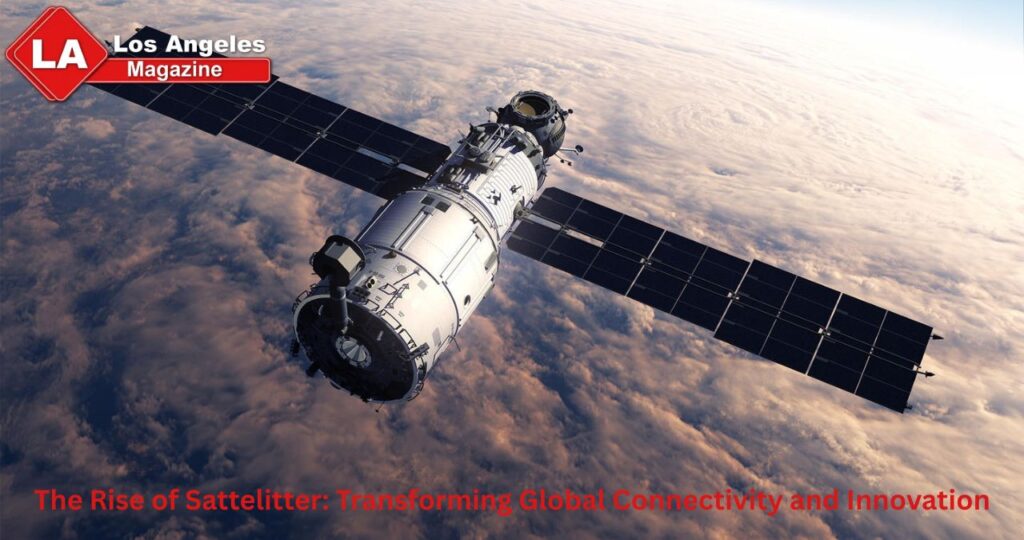In the fast-evolving world of technology, one term is becoming increasingly popular and powerful: sattelitter. A modern twist on the traditional “satellite,” sattelitter represents not just a piece of hardware orbiting Earth, but a symbol of innovation, integration, and interconnectedness in the 21st century. From revolutionizing global communication to enabling climate monitoring, navigation, and beyond, sattelitters are becoming an inseparable part of modern life.
What is a Sattelitter?
The term sattelitter refers to advanced artificial satellites—both in design and function—that go beyond the traditional role of relaying signals. Today’s sattelitters are embedded with AI, automation, advanced sensors, and cloud integration, making them smart, responsive, and adaptable to real-time data processing. While the spelling may appear unconventional, it reflects the evolution of these devices into next-gen tech marvels.
A Brief History of Satellites to Sattelitters
The history of satellites began in 1957 when the Soviet Union launched Sputnik 1, the first artificial satellite. It marked the dawn of the space age. Fast forward to today, sattelitters have transformed into ultra-lightweight, software-driven, AI-equipped tools orbiting Earth in various layers—Low Earth Orbit (LEO), Medium Earth Orbit (MEO), and Geostationary Orbit (GEO).
Unlike earlier satellites that required decades of planning and billion-dollar budgets, modern sattelitters can be launched in clusters called constellations. These small, yet powerful machines have opened the door for startups and private companies to explore space.
Applications of Sattelitters in Modern Society
1. Global Internet Coverage
Sattelitters are bridging the digital divide. Projects like Starlink, Kuiper, and OneWeb deploy thousands of sattelitters in LEO to provide high-speed internet to even the most remote areas. For example, rural villages in Africa and Amazon rainforest schools are now connected to the world, thanks to sattelitters.
2. Climate and Environmental Monitoring
From tracking deforestation to monitoring sea levels and detecting greenhouse gas emissions, sattelitters have become the eyes of Earth. NASA’s and ESA’s sattelitters provide real-time data that helps scientists understand climate change, enabling better policy decisions and disaster management.
3. Disaster Response and Management
During natural disasters like earthquakes, floods, or hurricanes, sattelitters are crucial. They provide early warning systems, help in mapping affected areas, and coordinate rescue operations. In 2023, sattelitters helped track wildfires in Canada and floods in Pakistan, allowing for faster emergency response.
4. Military and National Security
Governments use sattelitters for surveillance, intelligence, missile tracking, and secure communication. These technologies ensure real-time monitoring of border areas and protect national interests. Sattelitters also play a key role in cyber defense and space security.
5. Navigation and Transportation
We use GPS every day, whether in Google Maps or food delivery apps. GPS is powered by a constellation of sattelitters orbiting Earth. Not only that, but sattelitters are essential for air traffic control, ship navigation, drone operations, and future autonomous vehicles.
6. Space Research and Exploration
Sattelitters are also scientific tools for observing space phenomena—black holes, galaxies, solar flares, and more. They provide data for astronomers and physicists and assist in interplanetary missions. The James Webb Telescope, for example, is a sattelitter capturing the earliest galaxies formed after the Big Bang.
Sattelitters and the Rise of Private Space Industry
Gone are the days when space was only for government agencies like NASA or Roscosmos. Now, private companies like SpaceX, Blue Origin, and Rocket Lab are launching sattelitters regularly. These companies are making sattelitters cheaper, more efficient, and accessible to businesses, universities, and even developing countries.
CubeSats and NanoSats
Modern sattelitters often take the form of CubeSats or NanoSats—small, lightweight satellites that can be developed quickly and affordably. Universities use them for research; companies use them for Earth imaging, agriculture, and maritime tracking. The democratization of space has truly begun, and sattelitters are leading the charge.
Artificial Intelligence in Sattelitters
AI is transforming sattelitters into intelligent machines. Now they can analyze data onboard, make decisions, and adjust missions in real time. For example, a sattelitter monitoring crop health can detect problems and notify farmers instantly, reducing dependency on ground teams.
Moreover, AI-enabled sattelitters are playing a vital role in space debris tracking—predicting potential collisions and adjusting their orbits automatically. This ability is critical as Earth’s orbit becomes increasingly crowded with thousands of satellites.
Challenges Faced by Sattelitters
Despite their growing importance, sattelitters face some key challenges:
- Space Debris: With thousands of sattelitters in orbit, collisions and junk are becoming serious threats. Kessler Syndrome—a scenario where space becomes unusable due to cascading collisions—is a real concern.
- Regulations and Ethics: Who controls the sattelitters? What happens to user data? As private players enter space, the need for global regulations is more important than ever.
- Cost and Sustainability: While cheaper than before, sattelitter launches and operations are still costly. Moreover, the environmental impact of frequent launches needs to be addressed.
The Future of Sattelitters
The future is dazzling. In the coming years, we can expect sattelitters to become even smarter and more integrated into daily life.
- Quantum sattelitters may allow for unhackable communication systems.
- Biological sattelitters could study life support in space.
- Swarm sattelitters might operate in coordination like a hive mind, covering large areas of Earth or space.
Also, inter-sattelite communication will allow sattelitters to talk directly to each other, increasing efficiency and eliminating the need for ground stations in some cases.
Conclusion
From humble beginnings to high-tech marvels, sattelitters have evolved into indispensable tools shaping the future of human civilization. Whether it’s connecting the unconnected, protecting the environment, enabling scientific breakthroughs, or simply guiding your Uber to your doorstep—sattelitters are quietly at the heart of it all.
As we look up to the sky and imagine a smarter, better-connected world, one thing is certain: sattelitters are not just orbiting Earth; they are orbiting our everyday lives, silently powering a revolution.



